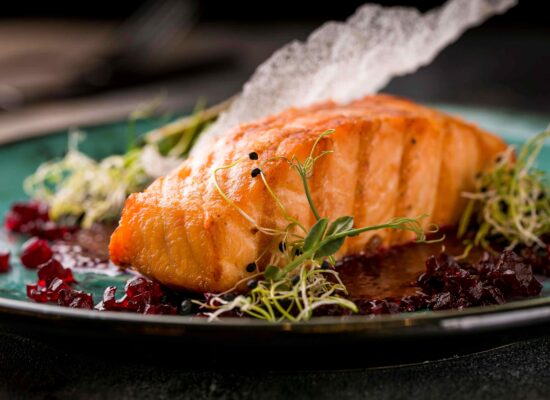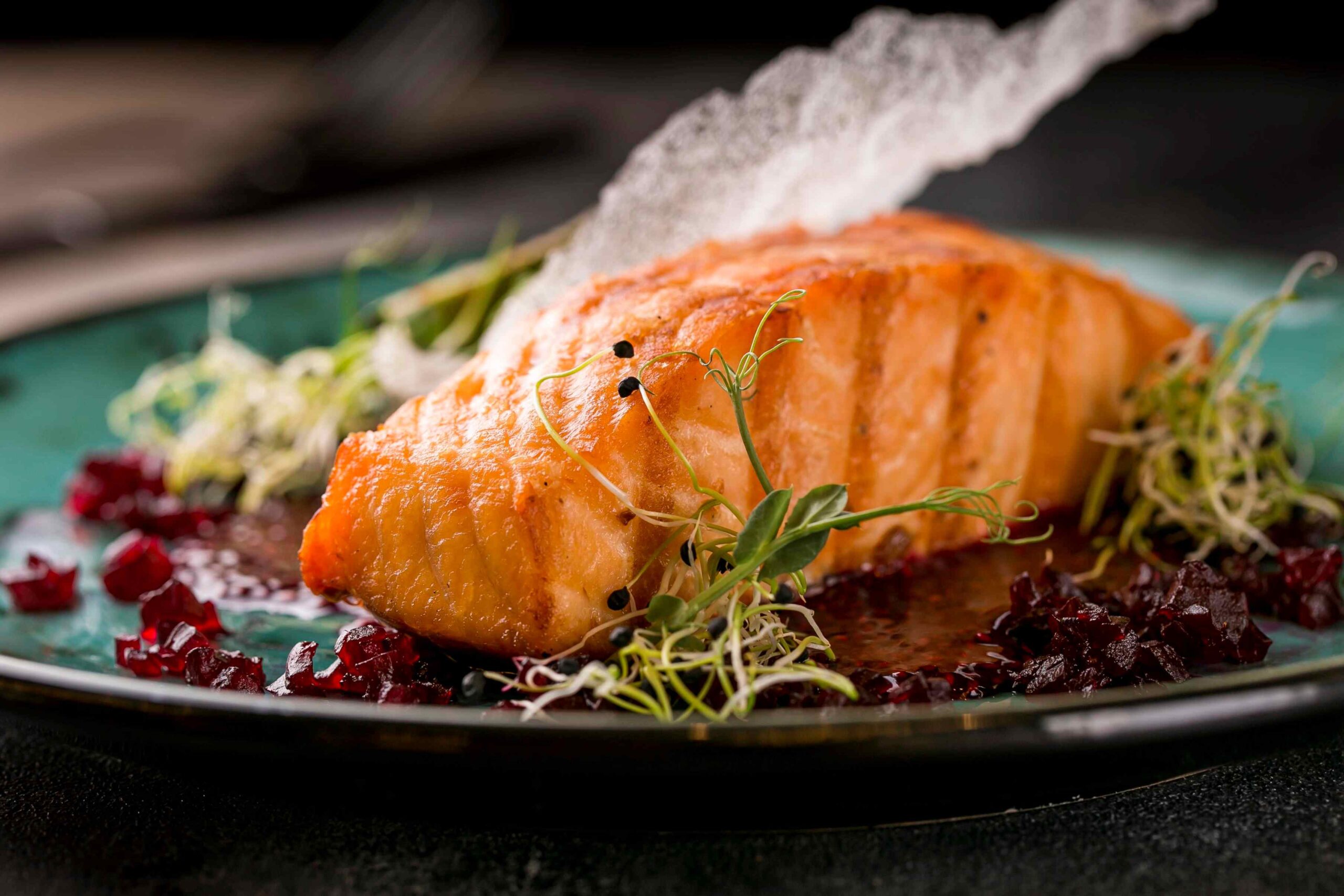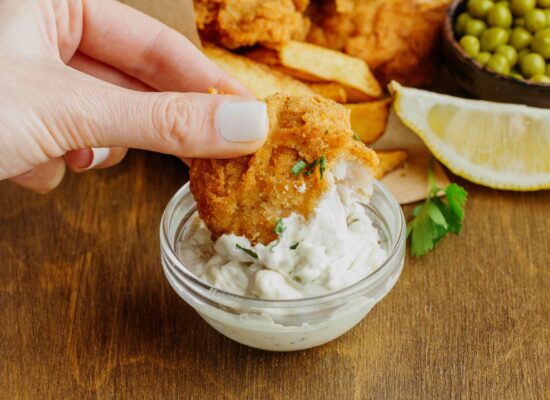Salmon recipes are a fantastic way to bring rich flavors and a dose of heart-healthy omega-3 fatty acids into your diet. Whether you prefer your salmon grilled, baked, or pan-seared, this versatile fish offers endless possibilities for delicious meals. Salmon’s natural flavor pairs well with a variety of herbs, spices, and sauces, making it the star of many seafood dishes.
In this blog post, we’ll explore 5 simple and flavorful ways to cook salmon at home. Each recipe is designed to be easy to follow, ensuring that even beginners can create restaurant-quality dishes.
Ingredients for Salmon Recipes
For the Salmon:
- 4 salmon fillets (about 6 ounces each)
- 2 tablespoons olive oil
- Salt and freshly ground black pepper, to taste
- Fresh herbs like dill, parsley, or thyme
- Lemon wedges for serving
For Additional Seasoning (optional):
- Garlic, minced
- Paprika or chili powder
- Soy sauce or honey for glazing
- Freshly ground cumin or coriander
Baked Salmon with Garlic and Herbs
Baking is one of the easiest and healthiest ways to prepare salmon. This salmon recipe uses simple ingredients that you probably already have in your kitchen.
Instructions:
- Preheat the oven to 400°F (200°C).
- Place the salmon fillets on a baking sheet lined with parchment paper.
- Drizzle olive oil over the fish, then season with salt, pepper, minced garlic, and fresh herbs.
- Bake for 12-15 minutes, or until the salmon is opaque and flakes easily with a fork.
- Serve with lemon wedges and a side of roasted vegetables or quinoa.
Tip: Baking your salmon in foil can help seal in moisture and keep the fish tender and flavorful.
Learn more about baking techniques and their history on Wikipedia.
Pan-Seared Salmon with a Crispy Skin
For those who love a crispy texture, pan-searing your salmon is the way to go. This method gives the fish a deliciously golden-brown crust while keeping the inside moist and tender.
Instructions:
- Heat a skillet over medium-high heat and add a tablespoon of olive oil.
- Season the salmon with salt and pepper.
- Place the salmon skin-side down in the pan and cook for 4-5 minutes until the skin is crispy.
- Flip the fish and cook for another 3-4 minutes, depending on the thickness.
- Serve with a fresh green salad or steamed asparagus.
Tip: Don’t move the salmon around in the pan while cooking, as this will prevent the skin from becoming crispy.
Grilled Salmon with Honey Soy Glaze
Grilling salmon brings out a smoky flavor that’s hard to resist. This salmon recipe includes a sweet and savory honey soy glaze that perfectly complements the fish.
Instructions:
- Preheat your grill to medium-high heat.
- In a small bowl, mix 2 tablespoons of soy sauce, 1 tablespoon of honey, 1 minced garlic clove, and a squeeze of lemon juice.
- Brush the glaze over the salmon fillets.
- Grill the salmon for 4-5 minutes per side, brushing with more glaze as it cooks.
- Serve with a side of grilled vegetables or rice.
Grilling gives the salmon a delightful char that enhances its natural flavors. Read more about grilling techniques and how to perfect your grill game.
Poached Salmon with Dill Sauce
Poaching is a gentle cooking method that keeps salmon moist and soft. This recipe is paired with a refreshing dill sauce for a classic and elegant meal.
Instructions:
- Fill a large pan with water, add a few slices of lemon, a sprig of fresh dill, and a pinch of salt.
- Bring the water to a simmer, then gently place the salmon fillets in the pan.
- Poach for 10-12 minutes, until the salmon is fully cooked but still tender.
- In a small bowl, mix 1/4 cup of Greek yogurt, 1 tablespoon of chopped fresh dill, and a splash of lemon juice.
- Serve the poached salmon with the dill sauce on the side.
Poaching is a healthy way to cook salmon as it doesn’t require added fats or oils.
Salmon Tacos with Avocado and Lime
For a fun and fresh twist on traditional tacos, try using grilled or baked salmon in place of the usual meat. These salmon tacos are perfect for a quick and healthy weeknight dinner.
Instructions:
- Cook your salmon using the grilled or baked method from earlier in this post.
- Break the cooked salmon into chunks.
- Warm some soft tortillas and fill them with the salmon pieces.
- Top with sliced avocado, a sprinkle of cilantro, and a squeeze of lime juice.
- Serve with a side of salsa or guacamole for an extra burst of flavor.
These salmon tacos are light, healthy, and packed with flavor, making them a great option for seafood lovers.
Tips for Cooking Salmon
- Don’t Overcook: Salmon cooks quickly, and overcooking can dry it out. Aim for an internal temperature of 145°F (63°C), or until the flesh flakes easily with a fork.
- Season Generously: Salmon has a strong flavor that holds up well to bold seasonings like garlic, herbs, and spices. Don’t be afraid to get creative with your marinades and rubs.
- Rest the Fish: Allow your salmon to rest for a few minutes after cooking. This helps the juices redistribute, keeping the fish moist and tender.
The Health Benefits of Salmon
Salmon is not only delicious but also highly nutritious. It’s an excellent source of high-quality protein and omega-3 fatty acids, which support heart health. Regular consumption of salmon may also help reduce inflammation and improve brain function. If you’re curious about the health benefits of omega-3 fatty acids, check out this detailed article on Wikipedia.
Eating a variety of salmon recipes can also aid in weight management, support a healthy immune system, and improve skin health.
These 5 salmon recipes offer a variety of ways to prepare this versatile fish. Whether you prefer it baked, grilled, pan-seared, or poached, salmon is a delicious and nutritious addition to any meal. Plus, its rich flavor pairs perfectly with an array of herbs, spices, and sauces, making it easy to tailor to your personal taste. With these simple techniques, you’ll be cooking like a pro in no time.















